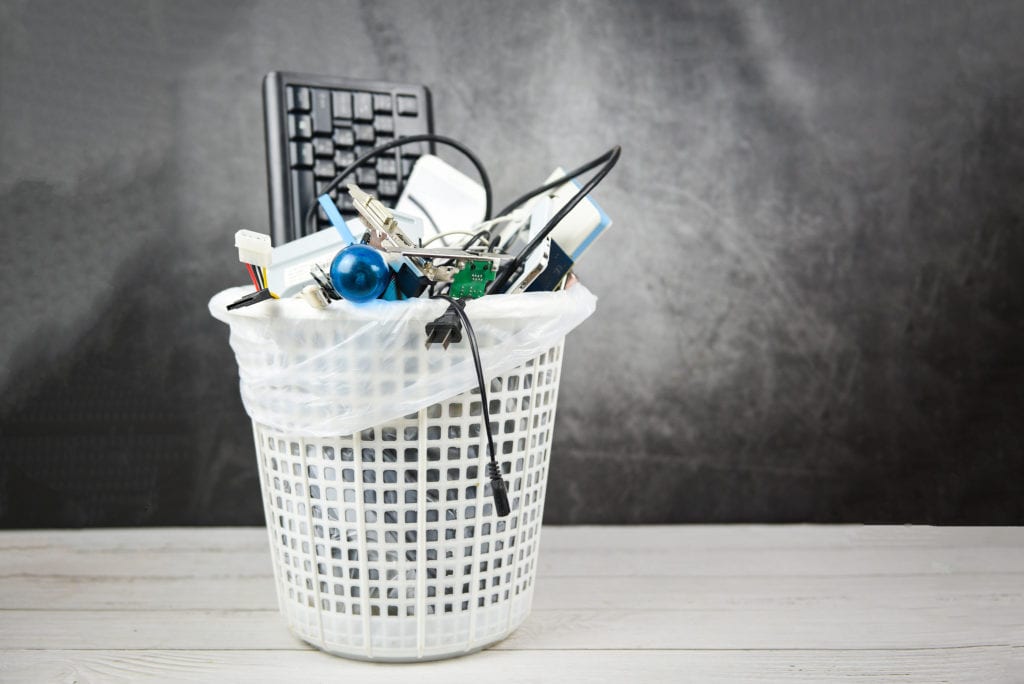
There comes a time in every computer’s life when it’s no longer productive, can’t be upgraded as it should, and is actually costing more to run than the price of a new computer.
A study released by Microsoft found that business computers over 4-years of age cost organizations about $2,736 per year to operate due to increased downtime, lower productivity, and computer repair costs.
When it’s time to decommission a computer, there are a number of steps to go through to ensure you’re not leaving important data on the device that could be found after you’ve disposed of it. This includes saved account passwords in browsers or authorized instances of Microsoft 365 or another cloud app.
If you’re not careful, your business data could be breached due to an older computer that wasn’t decommissioned properly.
Steps to Take When Getting Rid of an Older Computer
When disposing of an old computer, you not only have to consider how to clean data off a device, you also need to make sure it’s being recycled properly. You can’t just throw a computer in the trash due to the components inside.
Carl’s Computer Care offers a free recycling service and data destruction for old computers. So, you can both ensure the hardware is disposed of in a responsible way and know that it will be completely wiped of all your information.
If you want to prepare your computer yourself for disposal. Here are the steps you need to take to ensure it’s done correctly.
Sign Out of All Services & Syncing Applications
If you toss out your MacBook without first signing out of iCloud (or another service), you could end up with a big problem on your hands. A few things that could happen:
- You delete files from the device thinking they’re stored safely in the cloud, only to realize you were also deleting them from the synced service.
- Someone that gets their hands on your disposed computer could access your accounts, including those with payment cards stored.
- Your account passwords and email could be changed by someone that gains possession of your old computer.
You want to make sure you sign out of any services like Microsoft 365, Dropbox, iCloud, etc.
Sign Out of Your Browser(s) & Clear History, Cache, etc.
Another place that a lot of data is stored in your device is in your internet browser. Many users will save passwords, credit card details, and a ton of bookmarks to various sites.
You want to make sure all browser data is deleted, including all cookies, history, and cached content. Then, once you’ve removed all browser information, make sure you sign out of the browser, so someone else can’t access any stored information.
Backup/Migrate & Then Delete Files
Next, you’ll want to remove all your files from the hard drive. You should first ensure they are all backed up properly or migrated to a new computer.
Once you’ve confirmed that your data is safely stored elsewhere and you’ve signed out of any syncing services, delete all files on the drive.
Don’t forget your email! Make sure you’ve not only signed out of your email, but that you also delete any email in your mail program after backing it up or migrating it to a new device.
Uninstall Software Programs & Remove Cloud Access
Next, you’ll want to uninstall any software programs on the old computer. You don’t want to leave an active copy that’s going to make it difficult for you to activate a software on another computer due to license restrictions.
Go through the proper uninstall process for each program you’ve installed on the device.
You should also log into programs like Adobe Creative Cloud, Microsoft 365 and other similar apps that allow you to use your subscription on more than one device. Make sure you remove the old computer under your list of authorized devices.
Remove Device Access to Cloud Tools & Synced Phones
Both the Mac and Windows operating systems allow you to sync your phone so you can receive texts on your computer, share photos, and access apps. You want to make sure you remove those computer-to-smartphone connections before disposing of your computer.
This may have to be done on both the computer and the phone, so make sure to review manufacturer instructions.
Wipe the Hard Drive
Your visible files aren’t the only sensitive data that your device has. It’s important to completely wipe the hard drive of the computer. Some may refer to this as setting it back to factory condition, meaning, like when it was brand new without any user-added data.
Review operating system instructions for a hard drive wipe to remove data from other system folders that you might not be able to see in your documents folder.
Get Free Data Destruction & Recycling from Carl’s Computer Care
Don’t risk leaving sensitive information on an old computer. Bring your outdated device to us and we’ll remove all the data and recycle it for you for no charge.
Contact us today to schedule a consultation! Call 225-315-3498 or reach us online.
